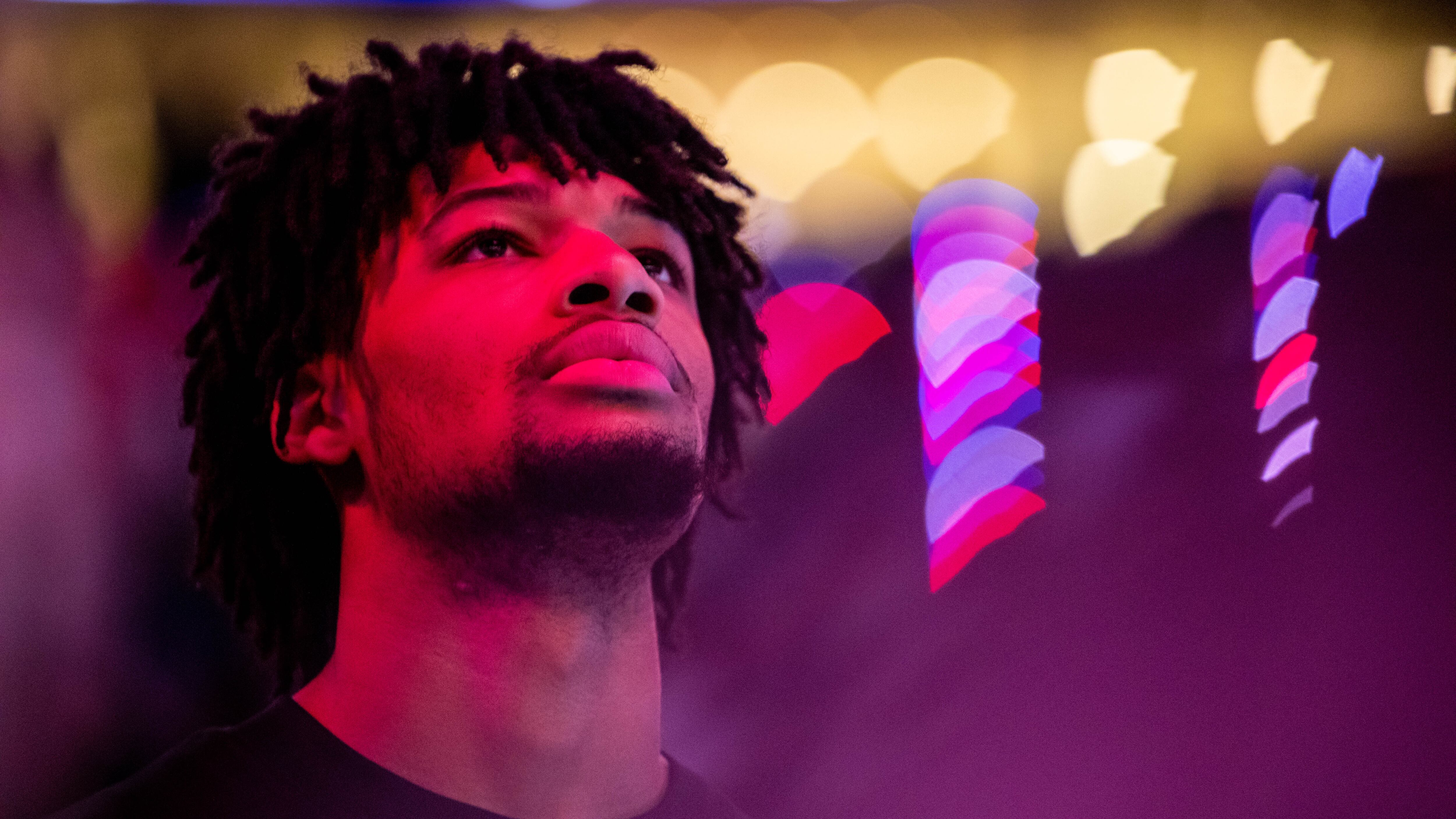The Portland Trail Blazers have a lot of work to do this summer. Before the season began, general manager Joe Cronin was upfront about expectations—the roster was incomplete and the Blazers were not ready to be contenders.
Reality was harsher than “incomplete,” though: 33 wins and 49 losses.
After a promising 10-4 start, all success evaporated. The team struggled to stay on the fringes of the playoff hunt. Shipping out Josh Hart at the trade deadline read as a tacit admission of defeat. Shutting down superstar Damian Lillard with 10 games to go was public display that the franchise was buying a Victor Wembanyama lottery ticket instead of chasing a miracle playoff run.
There’s a growing sense of skepticism that the Blazers can right the ship in time to take advantage of Lillard’s remaining superstar years. National pundits have openly compared the franchise to the perpetually moribund Washington Wizards and questioned if Lillard would play for Portland again. As we’ve discussed in this space, this season raised more questions than answers about the viability of the rebuild—and the cherry on the melted sundae was a 56-point loss to the Warriors this afternoon to close out the year.
The Blazers, however, remain resolute in their desire to win. And win now.
“The goal is to get better as soon as possible,” Cronin said during exit interviews on Sunday. “Timeline-wise, it’s time to start having a roster ready to compete at the highest levels.”
It doesn’t feel that way today, but it’s our contention that a path to contending exists. It won’t be easy. Odds are not in Cronin’s favor. But we sat down and charted the four steps that could place the team on surer footing.
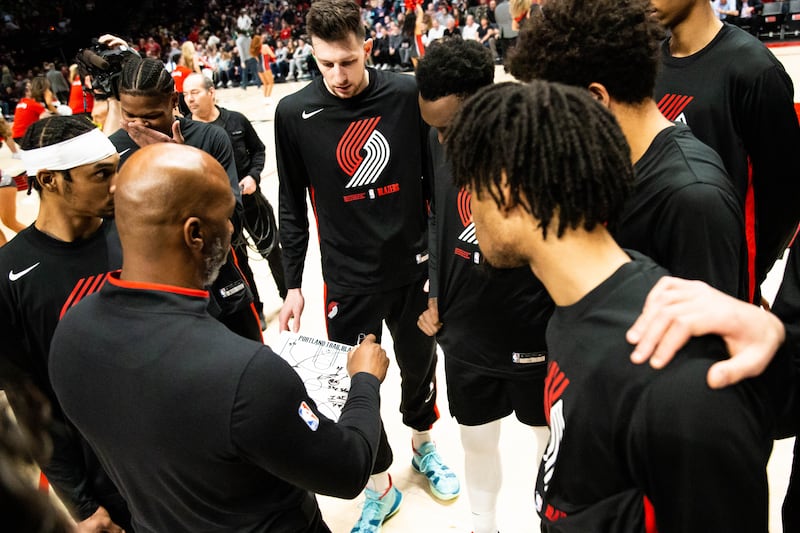
Step 1: Re-sign Jerami Grant
Cronin has a significant handicap. Despite their awful record and shallow lineup, the Blazers will not have space under the salary cap to sign high-impact free agents. Consider:
o Next year’s salary cap is set at $134 million.
o The Blazers have roughly $110 million committed to next season’s team salary.
o Another $10 million for a draft pick’s salary and “dead cap” accrued by cutting players.
o To even use the remaining $14 million they’d also have to renounce their free agents: Jerami Grant, Cam Reddish, Matisse Thybulle, Justise Winslow and Drew Eubanks.
These numbers might vary slightly, but the bottom line is that the Blazers cannot create significant cap space without releasing and/or dumping a significant chunk of the existing roster.
Given that limitation, it becomes imperative that Cronin retains Grant—he’s allowed to exceed the cap to keep players already on the roster. This season, Grant has been the best Portland forward since LaMarcus Aldridge. He’s shooting 40% on 3s, scores 20 points per game, and has the length and agility to thrive on defense. Grant’s poor rebounding is frustrating. But the team’s diminutive height at other positions is not his problem to solve.
The bottom line is that he’s earned a hefty contract. Grant already turned down a four-year, $112 million offer in January:
Jerami Grant on Monday told @TheAthletic the Blazers have offered him a 4-year, $112 million extension but he will likely wait until after the season to make a decision. He has until June 30 to accept the offer. (1/3)
— Jason Quick (@jwquick) January 31, 2023
Under the current cap situation, if the Blazers let Grant walk, they can’t replace him with a comparably skilled player. Saving $30-plus million on Grant does not create $30-plus million in cap space. Re-signing Grant is Cronin’s mandate.
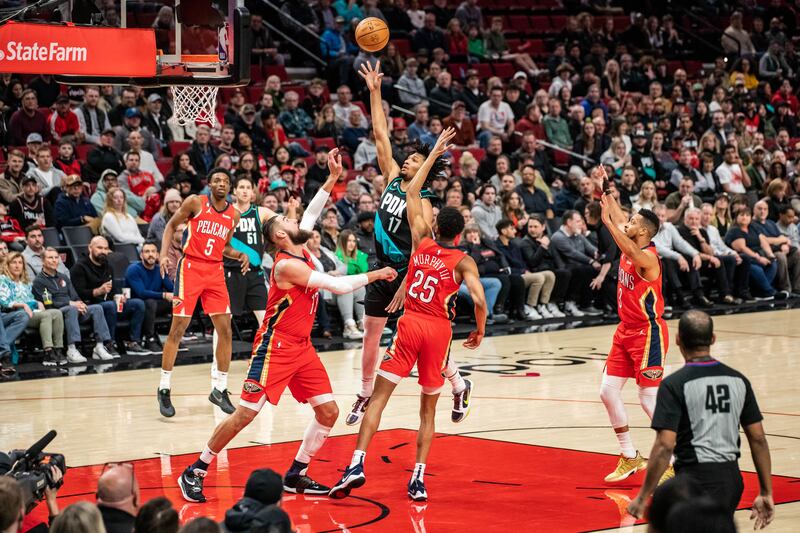
Step 2: Make The Big Trade
Everybody around the NBA knows the Blazers plan to (finally) make The Trade. “We’re borderline anxious to push all our chips in,” Cronin said in February. “We can’t wait for that moment to happen. It just hasn’t come up yet.”
That’s a somewhat surprising admission for a GM to make. But also refreshing compared to the alternative of press-secretary spin doctoring.
A trade big enough to make a splash necessitates sending out significantly talented players and significant salary. In a somewhat surprising twist, deciding which player will headline The Trade won’t be too difficult.
Shaedon Sharpe cannot be traded. He averaged 24.3 points per game over the last nine games as the tank progresses. Management conspicuously held him out of a must-lose game against the Spurs. He has a jaw-dropping defensive highlight reel, and a respectable 3-point percentage. It’s too early to say how good Sharpe will be, but his leaping ability could necessitate a tall ceiling.
Portland’s other untradeable: Damian Lillard.
Now here comes the hard/easy part. Simons plays the same position as Sharpe and Lillard. (They’re all guards.) Simons has also been excellent this season: a career-high 21.1 points per game on 38% 3-point shooting. But defensive limitations and questions about his impact on cold shooting nights suggest he will peak at about the same level as his predecessor, CJ McCollum.
Simons is skilled enough to be coveted by other teams. But he’s also too talented to play backup if Sharpe continues ascending. Throw in a fair contract and it’s not hard to imagine Simons plus some draft picks bringing back a borderline All-Star.
The inevitable conclusion is that the team’s bountiful success in the backcourt means they can afford to swap Simons for help in fortifying the undersized frontcourt.
The exact player to target remains unclear. OG Anunoby only has one year remaining on his contract. Karl-Anthony Towns and Lillard would be a league-best pick-and-roll combination, but Towns won’t help the frontcourt defense. Jimmy Butler may be on the tail-end of his prime playing years. Could a long shot like Jaylen Brown become available?
Ultimately, it will be on Cronin to identify a player who can reshape the roster. Someone like Domantas Sabonis, the definition of a borderline All-Star, who found a perfect team fit in Sacramento and spearheaded a playoff return. Start with a package of Simons and one or more first-round picks. See what negotiations emerge. Find the player that complements Lillard-Sharpe-Grant (preferably another athletic forward with size, defense, and shooting) and make The Trade.
(Obligatory disclaimer: All bets on Sharpe are off if Joel Embiid demands a trade.)
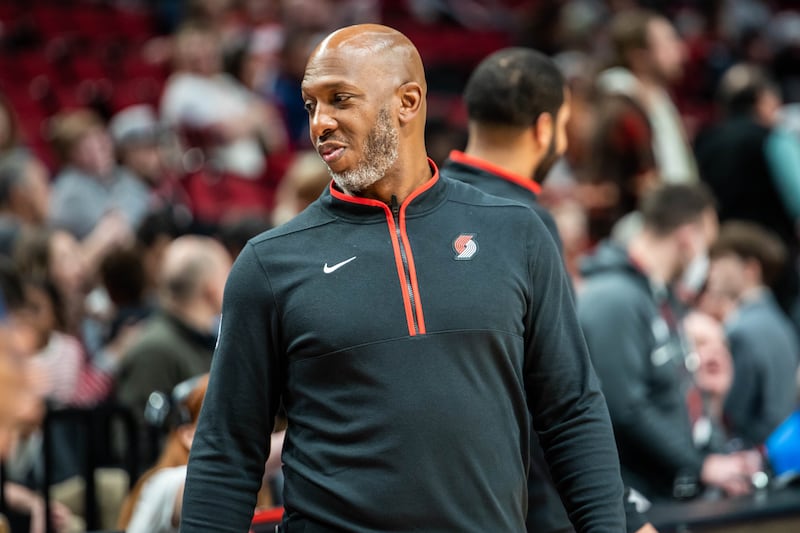
Step 3: Spend all the money they can
Portland’s bench could use some help. A steady backup point guard will be essential to manage Lillard’s workload to preserve health for the postseason. Matisse Thybulle and Cam Reddish looked solid but have clear enough limitations to be benched by their former teams. Nassir Little continues to show flashes of excellence on offense but remains a defensive liability. Outside of Nurkic, the frontcourt is so undersized that coach Chauncey Billups had to lean on Lillard and Hart for rebounding help.
Cronin will need to upgrade at least a couple of reserve spots to build a contender. Without cap space, that will require using every other means of improvement available. In contrast, this season the Blazers chose to leave the $4.1 million biannual exception unused and their midlevel exception signee barely played. That can’t keep happening. Not for a team trying to quickly rebuild a roster without cap space. If an exception is available, the Blazers must turn it into a rotation player.
Make no mistake, that will get expensive. For example, there’s a decent chance Cronin can use the full midlevel exception at the expense of entering the luxury tax. The Blazers have made moves that kept them slightly below that line in past years. They’ll have to change that policy this summer.
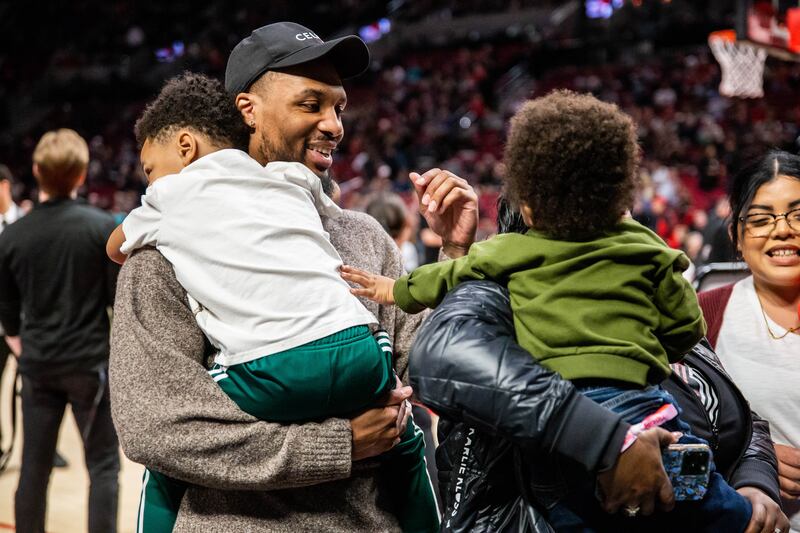
Step 4: Exercise patience
The best thing about this season: realizing that there might be a brief Sharpe-Lillard window. Sharpe looked better than advertised and will hopefully merit a starting spot soon. Meanwhile, Lillard looked better than ever coming back from offseason surgery. Suddenly, there’s a world where Lillard and Sharpe together are the backbone of a 2026 title contender.
Which softens the blow of the next part: Outside of a stellar starting backcourt and Grant, uncertainty hangs around the rest of the roster. The starting lineup gets murky if The Trade doesn’t land another starting forward. Jusuf Nurkic’s uncertain future in Portland merits its own article—suffice to say he’s a solid starting center, but his skills may not mesh with the style Billups seems to prefer. We’ve already talked about the bench rotation.
It takes longer than 12 months to fix a 33-win team. Unless every single move lands perfectly, the Blazers roster will still need some work when the 2023-24 season tips off.
All of that is to say that the organization should be patient. It will be tempting to send the Knicks’ first-round pick acquired for Hart to the Bulls:
It would make a lot of sense for both sides if the Blazers gave the Bulls the Knicks pick to buy back their own first and call it good. Bulls get basically an equivalent pick to the eventual lotto-protected first they're owed, Blazers open up future firsts to use in a big trade.
— Sean Highkin (@highkin) March 27, 2023
But that doesn’t have to be a default decision. If The Trade can be completed without multiple future first-round picks, then hang on to this year’s pick. Especially if draft guru Mike Schmitz has a favorite prospect. All signs point to Lillard still being a star in 2025. It’s fine if the front office believes a rookie’s impact in 2025 will exceed the value of trading the pick in 2023.
It’s hard to mistake the stink of desperation coming out of Moda Center. The team may soon be up for sale, Lillard’s loyalty is being tested by public embarrassment, and other franchises are sniffing around looking for a green GM to make a mistake.
Here’s our plea: It is possible to preserve the future of this franchise without disrespecting Lillard. It is possible to give him a shot at a championship without losing the best Blazers prospect since Jermaine O’Neal. Cronin has to try.
